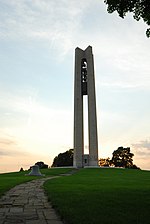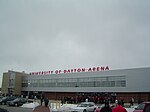Wright Flyer III
1900s United States experimental aircraftAircraft first flown in 1905Aircraft on the National Register of Historic PlacesCanard aircraftHistoric Mechanical Engineering Landmarks ... and 7 more
Individual aircraftNational Historic Landmarks in OhioNational Register of Historic Places in Greene County, OhioProne pilot aircraftSingle-engined twin-prop pusher aircraftUse mdy dates from August 2023Wright aircraft
The Wright Flyer III was the third powered aircraft by the Wright Brothers, built during the winter of 1904–05. Orville Wright made the first flight with it on June 23, 1905. The Flyer III had an airframe of spruce construction with a wing camber of 1-in-20 as used in 1903, rather than the less effective 1-in-25 used in 1904. The new machine was equipped with the engine and other hardware from the scrapped Flyer II and, after major modifications, achieved much greater performance than Flyers I and II.
Excerpt from the Wikipedia article Wright Flyer III (License: CC BY-SA 3.0, Authors).Wright Flyer III
Saint Francis Drive,
Geographical coordinates (GPS) Address Website Nearby Places Show on map
Geographical coordinates (GPS)
| Latitude | Longitude |
|---|---|
| N 39.727777777778 ° | E -84.201944444444 ° |
Address
John W. Berry Sr. Wright Brothers National Museum
Saint Francis Drive
45409
Ohio, United States
Open on Google Maps




